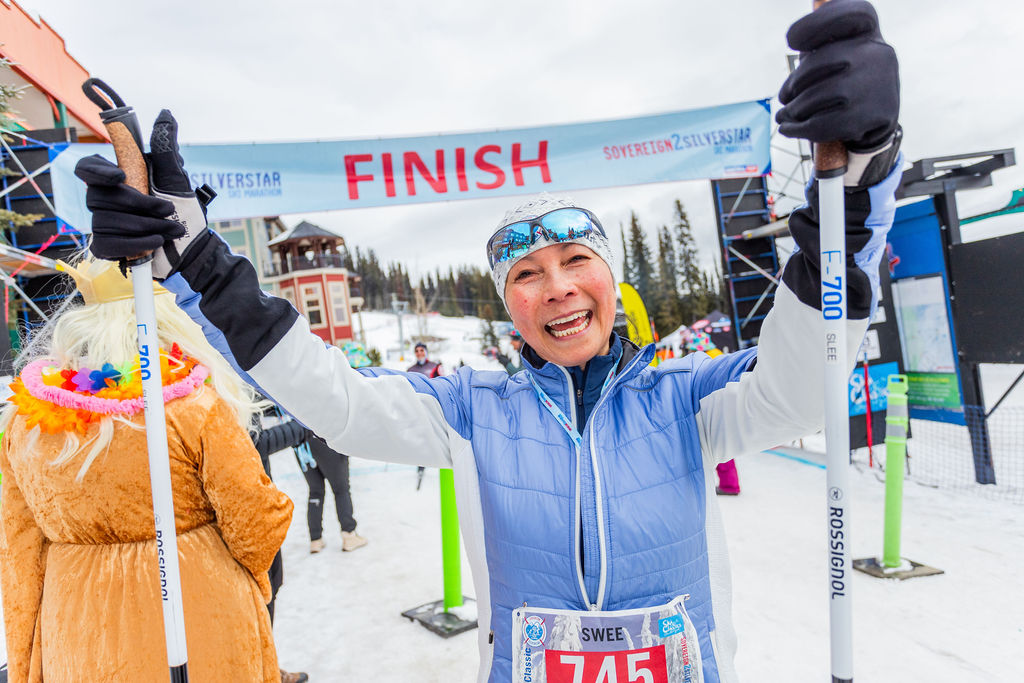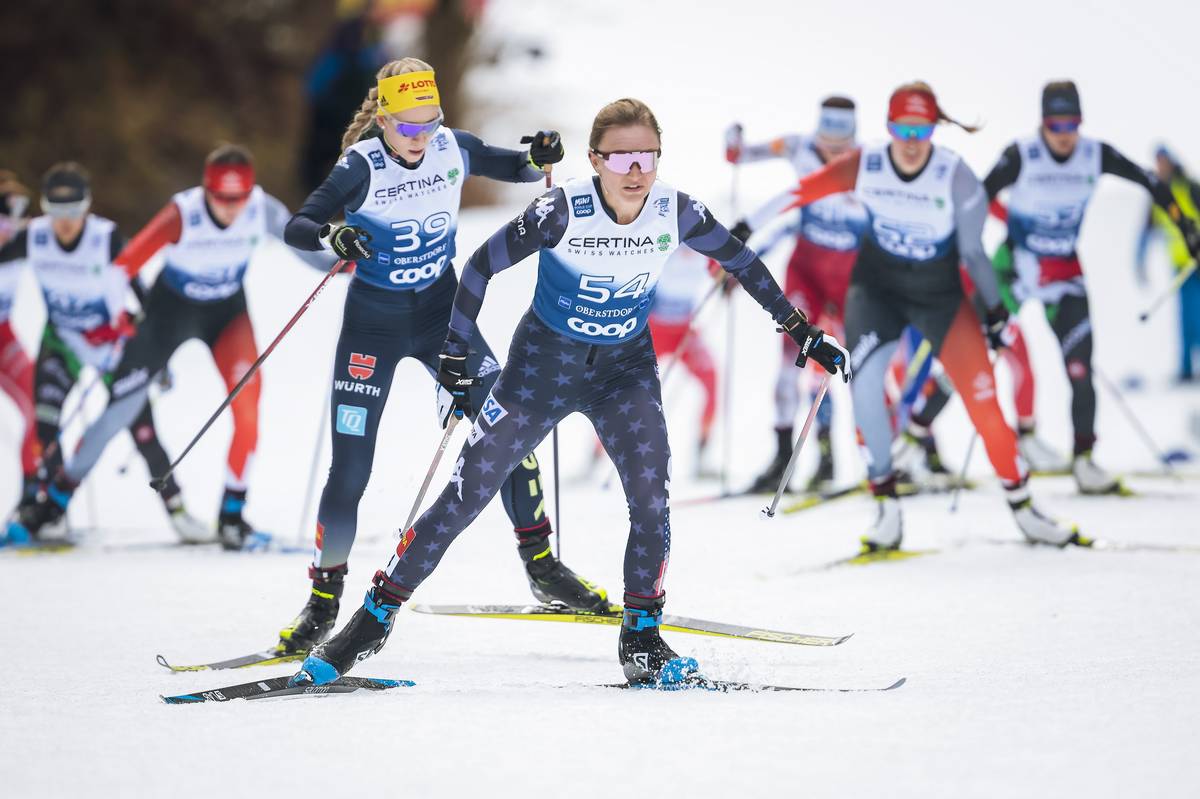Simplicity is good, but not when it comes at the expense of accuracy. It seems to me that when the mercury sinks, skiers just apply the hardest wax they can find and expect the best. I have found though that in very cold conditions discrepancies in people’s skis are often huge, despite how “simple†everything seems. Read on to learn how, why, and what to glide wax in cold conditions.
There are three main factors that greatly affect the skis’ gliding ability. They are ski flex, base structure, and glide wax. Base material is another factor, but most people just use what they have, so I’ll eliminate it for this discussion. It is key to understand that if any of these factors is out of alignment with the conditions of the day, the skis will not be so good. Some days one of these factors plays an especially strong role relegating the other two factors to less than critical. One example of this is when new snow falls, the tracks get set, and then set up. You have hard corduroy with some air trapped in it by the structure of the snow that has set up around it. When you ski over it, you hear a loud squeak and you also notice the corduroy breaking down under the ski. If you don’t go with soft skis, you will have slow skis, especially at the slower speeds (ie climbing). It doesn’t really matter what your structure and wax are, your skis aren’t going to be great. Another example is when it is raining and you have a “cold†grind. Flex and wax aren’t going to matter too much as your skis are going to really “suck†and be slow. When flex and structure are in order, then wax plays a strong deciding factor.
In the 2007 Yellowstone Rendezvous Marathon, overnight temperatures hit a low of -27F. At the start, the wind was blowing and the air temperature was around 4F (delayed start). I tested my skis independently, but at the same time as many other skiers. I tested LF Moly/LF Blue mixed followed by HF Blue covered by a rotocorked JetStream Moly on one pair against a similar pair of skis with the same grind that had LF Moly/LF Blue mixed followed by HF Blue mixed with XCold Powder. I was a bit surprised to have found the JetStream Moly skis to be faster. I checked with some of my compadres and learned that they had all had a similar experience. When the race was over, it turned out that 8 of the top 9 overall finishers went with this exact combination including the winner. Does this surprise you? Read on to learn about how, why, and what.
There are 4 main scenarios for cold snow conditions (2 of them are similar). I’ll go over each one including the characteristics of the snow as well as the waxing solution.
Let’s say there is a race on Saturday and on Thursday it snows 6 inches of pretty wet snow (air temperature in the mid 20s to mid 30s during the storm). Let’s say this storm is followed by very cold air. (In the Midwest, this is known as an Alberta Clipper). The cold air will take the moisture that was in the snow and create very sharp strong snow crystals. The snow will also contain air in it which is trapped by water in the snow (originally) and then later by the strong structure of the snow itself when it is groomed (creating some of the very strong corduroy that I referred to in the 2nd paragraph). This snow will be slow and will also require soft skis. Due to the slowness of the snow, adding Nordlite XCold Powder would be a very good thing. Nordlite XCold Powder has the effect of making the skis slipperier at slow speeds which is especially advantageous on the climbs. I’d mix the XCold in with either LF or HF Blue depending on temperature, anticipated sun exposure, anticipated warming during the event, etc. This is the most aggressive and slowest type of cold snow. This is the type of snow where you generally go with the very hard wax and expect the best. Like I said though, the XCold powder mixed in with the very hard wax really helps things. Especially in these conditions, it is especially important to have multiple layers of a very cold hard wax. Before applying the following wax tip, you will want to go with one of the blue waxes to harden the base first if you had been using a softer wax previously. The wax tip is LF Moly/LF Blue mix followed by LF Blue (or HF Blue depending) mixed with XCold Powder. In these conditions, it is also effective to rebrush the skis just before the start of an event. This is because most people wax indoors. Only some wax is squeezed out of the base at room temperature. When the skis have been outside in the very cold air for a while though, more wax is squeezed out of the base. For optimal glide in these conditions, this extra wax needs to be removed from the surface of the base. This is best done with a horsehair brush. The horsehair brush has fine yet stiff bristles that are incapable of creating hair like your metal brushes can.
OK, let’s say it is now two weeks later and for the past two weeks, it was just really cold. Nothing fell and the tracks were machined daily. The reworking of this old non-transformed and very cold snow has the effect of making it much faster and more compact. No longer will ski flex make such a difference as there will be far less air trapped in it. This snow will get “skied in†very quickly and will be fast. In these conditions, even in very cold temperatures, HelX Cold or JetStream Moly (rotocorked) are very effective over HF Blue. XCold powder is no longer advantageous as the snow is already fast, so there is no need to try to speed up the skis at slow speeds (hopefully you won’t be going at slow speeds). For these conditions, my choice would be LF Moly/LF Blue mix (we mix the Blue in with the Moly to harden it up in these cold conditions) followed by HF Blue followed by JetStream Moly rotocorked in. HelX Cold would also be an effective option. Rotocorking the JetStream Moly has proven to yield a faster finish in colder (especially powder) snow than ironing it. Use slow speed and lots of pressure. I like to do 2 applications to make sure it goes on well. Finish with a nylon polishing brush and then a polish with a thermo pad.
Fast forward another two weeks and add a few freeze and thaw cycles so now we have very cold corn snow. This is the easiest cold snow to have super fast skis on. These conditions are actually similar to the scenario above except when it comes to recommended structure. The wax recommendation is the same. Recommended structure is a fine to medium linear structure (looks like a rill, but worn in). In the other ones, you’re looking for a glass smooth base.
OK, now a cold front comes in. The cold weather sets in. Then a weak front comes which doesn’t push the cold air out, but yields some very cold snowfall. The snow is falling but the temperatures are very cold (let’s say 10F for example). There is basically no moisture in the snow. It looks like feathers falling. A car drives by and all of the snow that was lying on the road flies way up in the air and takes a full 10 seconds to settle back on the ground. We are talking about dry new fallen snow. This is a very common scenario in the Rockies, but is also found in the Midwest and Northeast. Dry friction as found in the first scenario is not really a problem here. The snow is simply dry, but not abrasive. Structurally, it is also not strong meaning ski flex won’t play a big role. You will also find a dry glaze in the snow. Many people mistake this for a true glaze, but it is different. There is no thin layer of water/ice creating a traditional glaze, but rather the snow flakes are simply aligned and flattened creating a reflective surface. In these conditions, HF Blue mixed with Nordlite XCold Powder is effective. Rotocorked on JetStream Moly is also pretty good, but does not offer much of an advantage over the HF Blue/XCold combo. HelX Cold isn’t very good. So the wax tip is LF Moly/LF Blue mix followed by HF Blue/XCold mix. Rotocorked JetStream Moly can be added with no detriment, but without much advantage either.
You don’t really need to address dirt in very cold snow as all of the cold waxes are very resistant to dirt. The dirty conditions that you really need to watch out for are wet and dirty conditions. This is because the hydrophobic waxes are generally soft and will be worse at repelling dirt. Dirt in snow is more likely to stick to HF Yellow than it is to HF Blue. We don’t use HF Blue in those conditions though because it is not as hydrophobic as HF Yellow.
I should also point out that Toko has excellent products for cold conditions. HF Blue and JetStream Moly (rotocorked) are really awesome in cold conditions. Other companies go with LF waxes (and generally don’t have the skis that we have). When they develop faster products for the cold, you can bet they’ll be recommending them.
So to summarize, all cold snow is not the same. To have predictably fast skis, first the flex and structure need to be good. Then we need to identify what kind of cold snow conditions we will be facing and then act accordingly.




